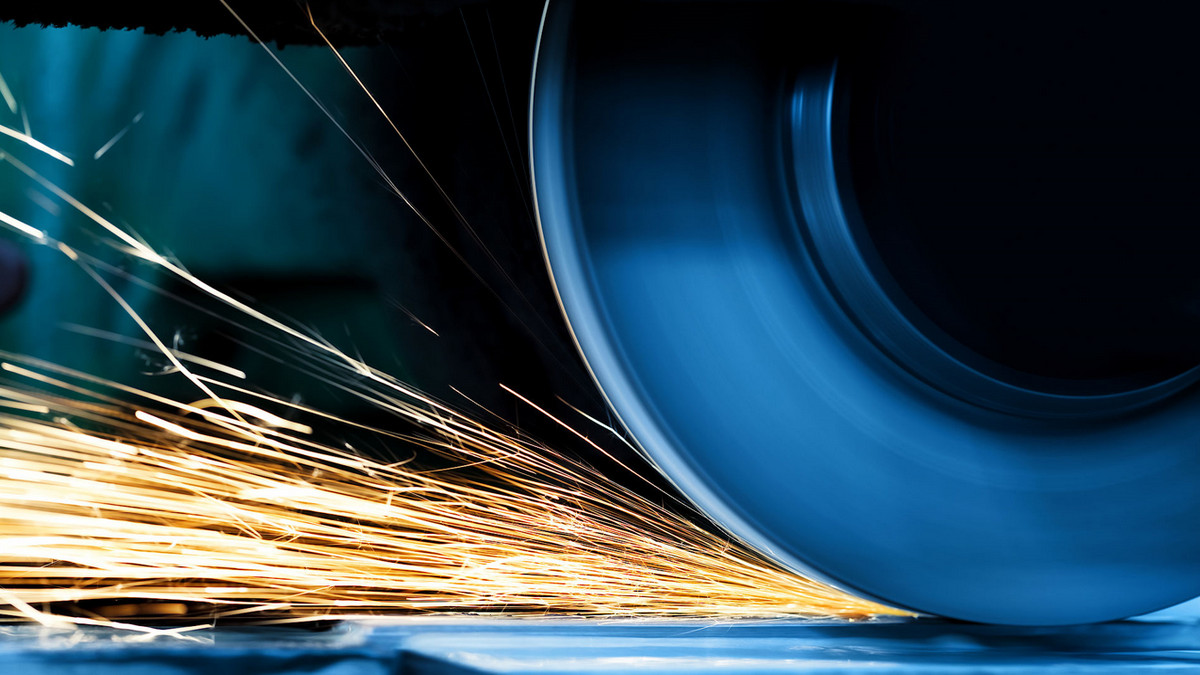Industrial saws shape raw materials into precise components that form the backbone of countless products. Understanding the mechanics of sawing, examining the fundamental principles, cutting mechanisms, and essential aspects of safety and maintenance will ensure the most efficient and safe operation of industrial saws.
Blade Types, Tooth Configurations, and Materials
At the heart of sawing lies the use of linear motion to slice through various materials. The basic principle involves teeth on the blade engaging with the material, creating a cut as the blade moves. Industrial saws come in a myriad of blade types, tooth configurations, and materials, each tailored to specific applications.
Blade Types
Blades come in various forms, from continuous loops in band saws to circular discs in circular saws. The choice of blade type is dictated by the saw's intended use – band saws excel in intricate cuts, circular saws power through straight lines, and reciprocating saws navigate confined spaces with their back-and-forth motion.
Tooth Configurations
Teeth are the heart of precision in sawing. The configuration of teeth on a blade determines the nature of the cut. Fine-toothed blades are ideal for delicate work, providing a smooth finish, while coarse-toothed blades power through thick materials with speed.
Materials
Blades are crafted from an array of materials, each chosen for its specific characteristics. High-speed steel (HSS) blades offer durability and heat resistance, carbide-tipped blades boast longevity and sharpness, and diamond blades excel in cutting through hard materials like concrete and metal.
Cutting Mechanisms: Precision in Action
Different types of industrial saws employ unique cutting mechanisms, each designed to deliver precision in specific applications.
Band Saws and Continuous Cutting
Band saws operate on the continuous cutting principle. The blade moves in a loop, guided by two rotating wheels. The material is fed into the blade's path, and the continuous motion allows for intricate curves and detailed patterns. Horizontal band saws are ideal for straight cuts, while vertical band saws excel at intricate, curved cuts.
Circular Saws
The blade of a circular saw rotates rapidly, creating straight cuts in materials at high speed. The circular saw allows for quick, efficient cutting, making it a staple in construction and manufacturing.
Reciprocating Saws
The blade of a reciprocating saw moves in a back-and-forth manner, making it ideal for tasks requiring precision in confined spaces.
Factors Influencing Cutting Speed, Accuracy, and Surface Finish
The effectiveness of sawing goes beyond raw power – factors influencing cutting speed, accuracy, and surface finish play a crucial role in determining the quality of the end product.
Cutting Speed
Cutting speed can depend on the type of saw and blade, the material being cut, and the tooth configuration. Band saws offer precision in intricate cuts, circular saws power through materials swiftly, and reciprocating saws navigate confined spaces with speed and precision.
Accuracy
The accuracy of cuts depends on the design of the saw and the precision of the cutting mechanism. Band saws, with their ability to handle intricate curves, excel in detailed work, while circular saws provide straight and accurate cuts.
Surface Finish
The surface finish is impacted by the tooth configuration and material of the blade. Fine-toothed blades create smooth finishes suitable for woodworking, while coarse-toothed blades are ideal for tasks where speed takes precedence over a polished surface.
Safety and Maintenance
Following proper safety guidelines ensures a secure working environment and minimizes the risk of accidents.
Protective Gear
Wearing appropriate protective gear, including safety glasses, ear protection, and gloves, is essential. Depending on the type of saw and material being cut, additional safety measures such as respiratory protection may be necessary.
Secure Workpiece
Ensuring the workpiece is securely positioned and clamped reduces the risk of kickbacks and enhances overall stability during cutting.
Training and Awareness
Proper training for operators and awareness of the specific risks associated with each type of saw contribute to a safer working environment. Understanding the saw's capabilities and limitations is crucial.
Maintenance Tips
Regular maintenance is the key to extending the lifespan of industrial saws and ensuring optimal performance.
Blade Inspection and Replacement
Regularly inspecting the blade for wear, dullness, or damage is essential. Promptly replacing blades maintains cutting efficiency and prevents accidents.
Lubrication
Lubricating moving parts, such as blade guides and rotating wheels, reduces friction and enhances overall performance.
Alignment Checks
Maintaining the alignment of the blade ensures accurate cuts. Misalignments can lead to uneven cuts and premature wear on the blade.
Dust and Debris Removal
Clearing away dust and debris from the saw's mechanisms and ventilation system prevents overheating and enhances the efficiency of the cooling system.
In conclusion, understanding the mechanics behind sawing, the nuances of cutting mechanisms, and the critical importance of safety and maintenance ensures the safe and efficient production of precise components.







.png)






